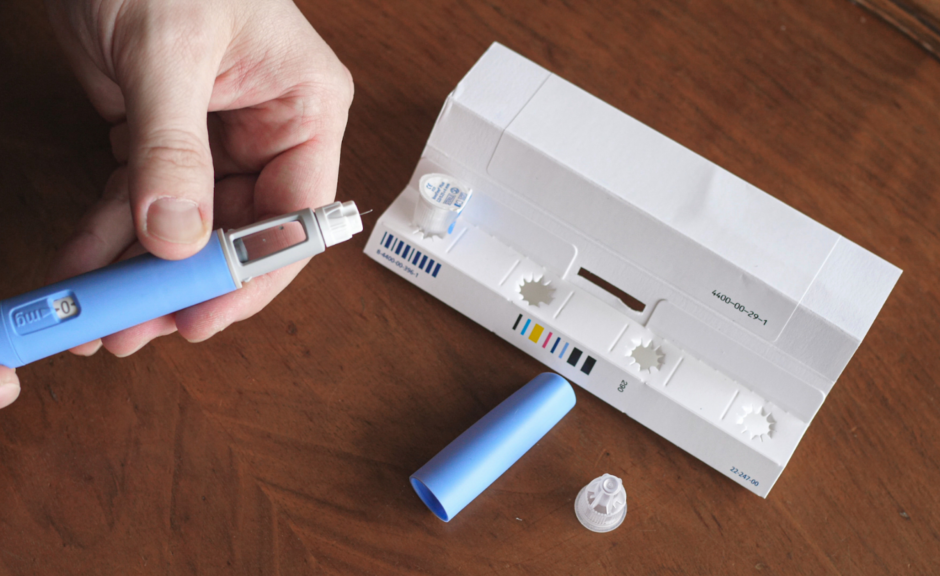A new class of medications originally intended to help manage type 2 diabetes is increasingly finding its way into conversations about sports performance and body composition. GLP-1 receptor agonists, often referred to simply as GLP-1s, have been hailed in the medical world for their effectiveness in promoting weight loss, but their spread into professional and amateur athletics raises familiar questions about where the line lies between legitimate medical treatment and performance enhancement.
GLP-1s, which include drugs like semaglutide and liraglutide, work by mimicking a natural hormone that regulates blood sugar and appetite. They slow gastric emptying, help stabilize insulin production, and create a prolonged feeling of fullness that curbs calorie intake. For patients dealing with obesity or diabetes, the drugs have produced striking results, often reducing total body weight by 15 percent or more. That kind of rapid transformation has understandably caught the attention of athletes for whom body weight, agility, and appearance can play critical roles in both performance and career longevity.
The potential appeal for athletes is obvious. Reportedly, some competitors see GLP-1s as a shortcut to shedding pounds without enduring grueling dietary regimens. For endurance runners, swimmers, or gymnasts, carrying less body mass could theoretically reduce strain on joints, improve efficiency, and increase competitiveness. For combat sports athletes, who must make strict weight classes, the appetite-suppressing effect of these medications could seem particularly useful.
Yet doctors and sports scientists warn that what works for patients in a clinical context may not be appropriate for elite performers. GLP-1s can cause nausea, diarrhea, and gastrointestinal discomfort that may be difficult to manage alongside heavy training schedules. More concerning for athletes, however, is the potential for loss of lean muscle mass. Rapid weight loss induced by GLP-1s does not exclusively target fat stores; muscle tissue can be reduced as well. In the world of high-performance sport, where strength and recovery are as crucial as weight control, a decrease in muscle mass could compromise the very qualities athletes depend on most.
At present, GLP-1s are not banned by the World Anti-Doping Agency or other major sports governing bodies. The drugs have not been studied thoroughly enough in athletic populations to warrant inclusion on a prohibited list, and they remain legally available with a prescription. This regulatory gray zone mirrors earlier eras in which substances migrated from medical use into sports before regulators fully understood their implications.
History provides several cautionary examples. Stimulants such as amphetamines were once widely prescribed to treat attention and energy disorders but were later discovered to provide athletes with an advantage in focus and endurance. Reportedly, in the mid-20th century, professional cyclists and soccer players were found to be using stimulants, sometimes with tragic results, leading to bans and stricter testing regimes. Corticosteroids, another class of drugs initially embraced for their legitimate medical use in reducing inflammation, also became controversial. While they offered short-term pain relief that allowed athletes to continue competing, long-term use reportedly raised concerns about masking injuries, leading to more serious harm down the line.
Even anabolic steroids, now universally banned in sport, began as a medical treatment for conditions like muscle wasting and recovery from surgery. Their performance-enhancing properties only became a focus after widespread abuse reportedly surfaced among weightlifters and track athletes in the 1960s and 1970s. The pattern is clear: substances developed for medical reasons often drift into the athletic sphere, where their effects are amplified and scrutinized in the pursuit of competitive advantage.
GLP-1s now appear to be the latest example of this cycle. They are not anabolic agents, and they do not directly build muscle or increase endurance. Yet their ability to reshape body composition in a relatively short period of time places them in a gray area that invites debate. Is losing 30 pounds through a prescription drug materially different from doing so through months of strict diet and exercise? If the result is the same physique but with less effort and greater risk, does that undermine the spirit of competition?
For athletes themselves, the temptation can be difficult to resist. Some high-profile figures have already hinted at or admitted to using GLP-1s, fueling speculation and public debate. Fans are left to wonder whether sudden changes in an athlete’s appearance or performance can be attributed to hard work, medical treatment, or chemical intervention. For regulators, the key question is whether these drugs provide an unfair edge or whether they carry health risks significant enough to warrant prohibition.
The answers remain uncertain. Research into GLP-1s is ongoing, and while their benefits for managing diabetes and obesity are well established, little is known about their long-term effects in healthy individuals, let alone elite athletes. Potential links to pancreatitis, gallbladder issues, and gastrointestinal complications remain under review. The impact on performance under the extreme conditions of professional sport—endurance races, contact sports, or high-intensity competitions—has not been systematically studied.
The discussion is further complicated by the cultural momentum behind these drugs. GLP-1s have become household names, promoted widely in weight-loss communities and reportedly endorsed by celebrities outside of sports. Their popularity has grown so quickly that demand often exceeds supply, creating shortages for patients who rely on them for medical reasons. In that environment, athletic use raises ethical questions not only about fairness in competition but about equitable access to healthcare.
What is clear is that GLP-1s are part of a larger narrative about how medicine and sport continually collide. Each new breakthrough in treatment carries the potential to shift athletic performance, for better or worse. As with stimulants, corticosteroids, and steroids before them, regulators will likely be forced to weigh the medical legitimacy of GLP-1s against the potential for misuse in competitive settings. Until that happens, athletes, coaches, and fans are left navigating a familiar gray zone where innovation meets controversy.
The story of GLP-1s and sports is still being written. They may eventually be studied, regulated, and perhaps even banned in certain contexts. Or they may remain an accepted tool, no different than nutritional supplements or recovery therapies already in common use. What remains constant is the tension at the heart of sport: the desire to push the human body further while still preserving fairness, safety, and integrity. For now, GLP-1s embody that tension perfectly—medical marvels in one context, potential controversies in another.




